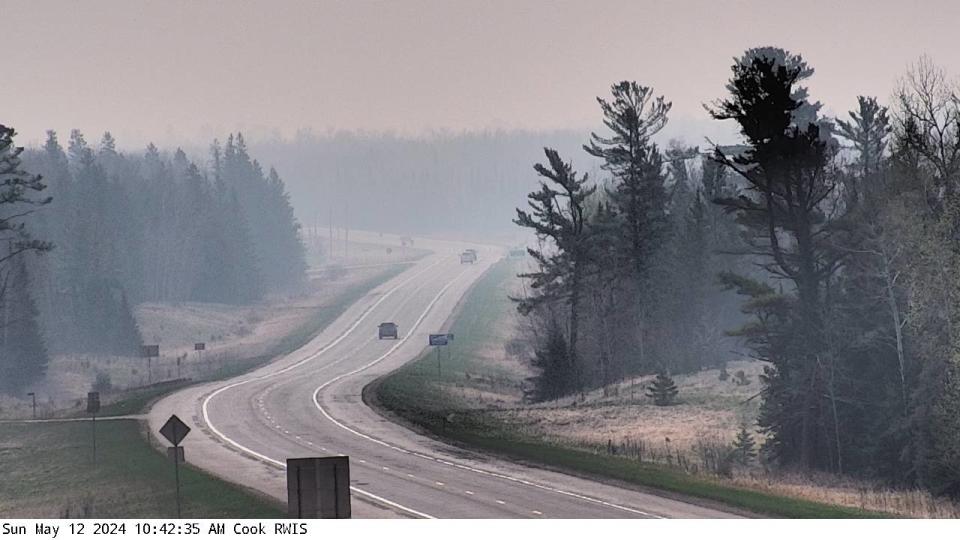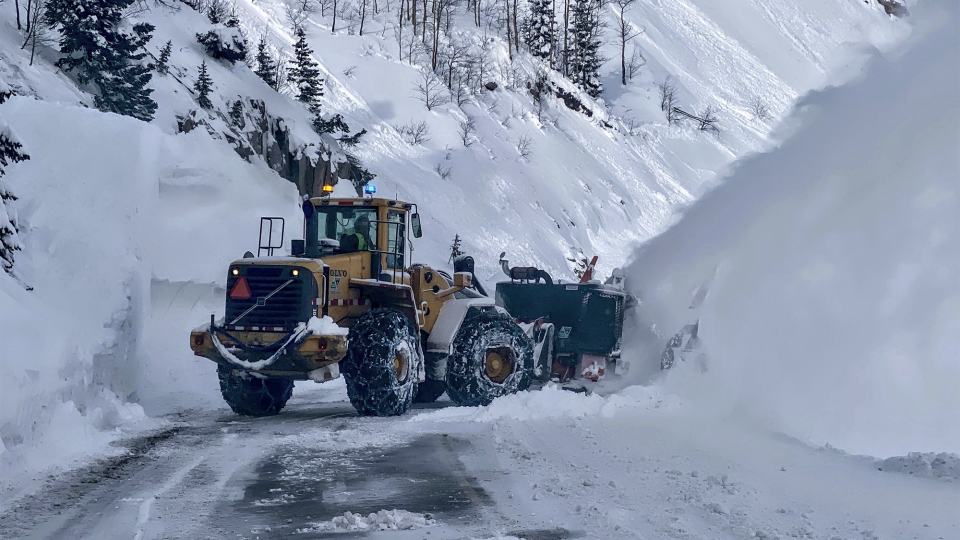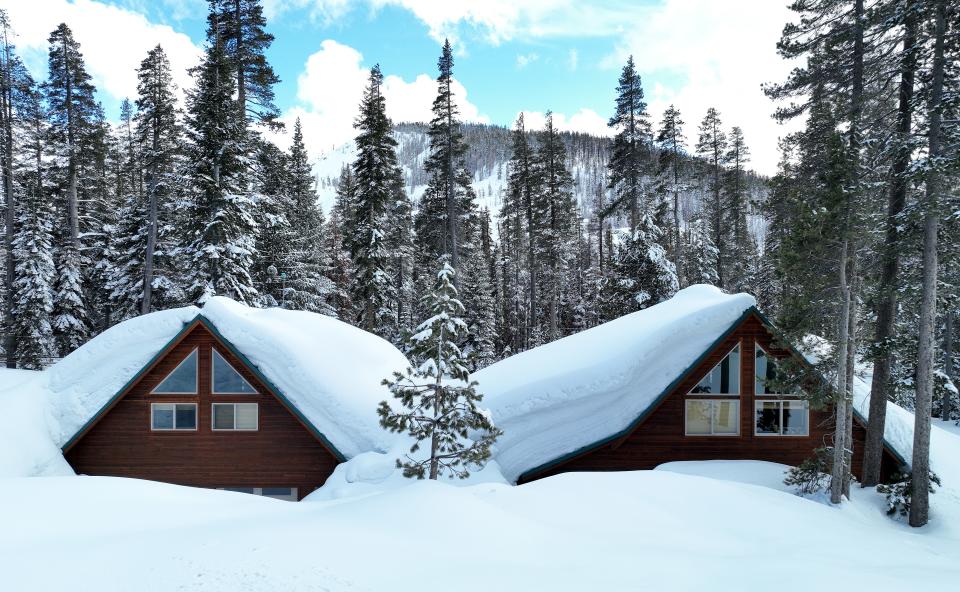Snow drought in Northwest, mountains ignites wildfire and water rationing fears
Record snowmelt during a heat wave in April after sparse winter snows set off alarm bells in some western states. That resulted in a snow drought robbing regions of fresh water, soil moisture and reservoir/groundwater refill during the hottest time of the year.
"The most severe snow drought remains in the northern Rocky Mountains and Washington, where the snowpack at many lower elevation sites melted one to four weeks early," wrote NOAA and the National Integrated Drought Information System. "The NOAA National Weather Service Climate Prediction Center’s Seasonal Drought Outlook projects drought development and expansion in the regions."
SNOWFALL CONSIDERED CRUCIAL FOR LONG-TERM DROUGHT MITIGATION
One concern is the water supply to the millions living across the West and farmers' thirsty crops. Another concern is wildfire.
"I'm pretty concerned about this wildfire season, I'm going to be honest with you," FOX 13 Meteorologist Abby Acone told FOX Weather on Sunday. "We've been talking so often about the dismal mountain snowpack."
Wildfires have already exploded across Canada, in a similar drought. Flames forced an entire town to evacuate in British Columbia.

LONG TERM ‘ISN’T LOOKING GOOD' FOR LAKE MEAD IN LAKE POWELL, AMERICA'S LARGEST RESERVOIRS
Low stream flow and warmer water will also stress fish and other aquatic wildlife. Rockies snowfall also feeds the Colorado River which fills the largest reservoirs in the U.S., Lake Mead and Lake Powell. Seven states and Mexico depend on water from the Colorado River.
The percent of normal snowpack for this time of year is about half for several key water basins across Washington, British Columbia and the northern Rockies. That means the amount of water locked in the snow and ice (snow-water-equivalent) is about 60% of normal. So the amount of water streams deliver to water managers will be cut by about 40% of a normal year.
"And with warmer than normal temperatures and drier than usual weather expected over the next three months, I'm worried that we're going to have a heightened threat for wildfires," Acone said. "I think it could be a difficult summer."
Tracking snowmelt, snow-water equivalent and snow disappearance dates at this time of year can identify potential shortcomings with the summer water supply, soil moisture and vegetation conditions.
Even areas that had above average snowfall through the winter in Colorado and New Mexico are falling behind with stored water due to warmer temperatures.
COLORADO MAN WHO NEARLY DIED IN SNOW CAVE CREDITS DAUGHTER IN NEW YORK FOR SAVING HIM

Washington declared a drought emergency in mid-April for most of the state. NOAA cites the low snowpack as the main reason.
"After an exceptionally dry start to the winter, Washington’s snowpack made up some ground in February, March and April," Washington's Department of Ecology said in a statement. "But with chances for significant additions to our snowpack now diminishing, there is simply not enough water contained in mountain snow and reservoirs to prevent serious impacts for water users in the months ahead."
Only Seattle, Tacoma and Everett are not included in the emergency. Ecology stated their reservoirs make the areas more drought resistant.
"We depend on that winter snowpack to meet the needs of Washington’s farmers, fish, and communities during the dry summer months," said Washington Governor Jay Inslee in a statement. "And this year, it’s just not at the level we’re accustomed to and rely on."
The declaration frees up grant money that the public can use during the emergency. It also enables the Department of Ecology to grant emergency water rights permits and transfers.
"By moving quickly to declare a drought, we can begin delivering financial support to water systems with drought impacts, and work with water users to find solutions to challenges before they become a crisis," said Laura Watson, Ecology’s director in a statement.
Ecology stated that this drought emergency is really a continuation of 2023's drought emergency.
"Unfortunately, an El Niño weather pattern brought more warm weather and left many mountaintops bare in early winter," Ecology's communication director wrote. "The 2023 drought declaration was scheduled to end June 30 this year. The new, statewide declaration will continue into next year."
The Climate Prediction Center calls for a toasty western summer with above normal temperatures through August. The heat accompanies below normal rainfall.
NEW SUMMER WEATHER OUTLOOK LOOKS TOASTY ACROSS MUCH OF US AS JUNE LOOMS
Acone said that westerners need to start getting prepared for a hot, dry summer.
"About 50% of the population here don't have air conditioning. And that makes it really difficult," she said. "And then the stress on the power grid, when we think about these heat waves and even wildfires compromising that."

CALIFORNIA WATER SUPPLY RESCUED BY ‘MIRACLE MARCH’ SNOWPACK FROM SEVERAL ATMOSPHERIC RIVERS
Most of Oregon, California and the Great Basin are still in good shape water-wise heading into the summer. The snowpack is still above normal. The U.S. Department of Agriculture expects Lake Tahoe in California and Nevada to be full for the first time in five years.
"Once full the stored water in Lake Tahoe typically provides sufficient supply to meet demand for three years even if snowpacks are below normal," the USDA report read.
Original article source: Snow drought in Northwest, mountains ignites wildfire and water rationing fears

